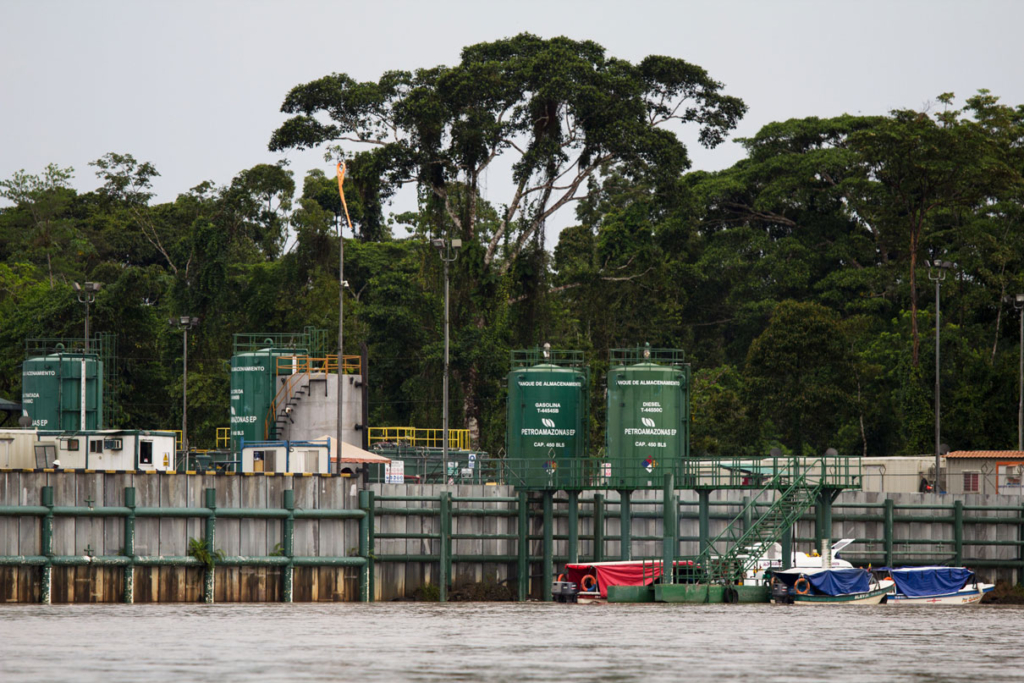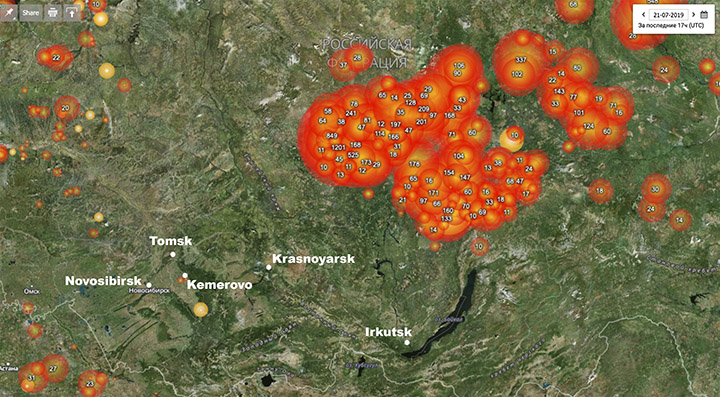Heart of Ecuador’s Yasuni, home to uncontacted tribes, opens for oil drilling – “Their intentions are deceitful. What’s the real commitment the government is making to conserve this area?”

By Kimberley Brown
5 July 2019
QUITO, Ecuador (Mongabay) – Ecuador’s Yasuni National Park sits in a unique position on the equator, between the Andes mountain range and the Amazon rainforest, which has allowed a rich and distinct biodiversity to flourish. The region is surrounded by towering ceibo and mahogany trees, emblematic of the area, as well as hundreds of endemic birds, mammals and amphibians. Traveling down the Yasuni River at the far east of the park, it’s hard to really fathom this diversity that surrounds you, as lush green jungle extends for miles on either side.
Yet conservationists are worried. Earlier this year, the Ecuadoran government approved two new controversial plans to drill for oil farther into Yasuni National Park, which will also encroach on the Intangible Zone (known by its Spanish acronym ZITT), a special area within the park created to protect the two uncontacted indigenous nations that live there, the Tagaeri and Taromenane.
In April, the Ministry of Environment approved plans to open two platforms of the Ishpingo oil field, the third phase of the controversial Ishpingo-Tambococha-Tiputini (ITT) project. Ishpingo is the most contentious field in the ITT project as it is the largest and overlaps with the ZITT and its buffer zone, an area 10 kilometers (6 miles) wide that surrounds the ZITT.
Then in May, President Lenín Moreno signed a new decree that allows oil platforms to be constructed within the Intangible Zone’s buffer area, which was previously forbidden.

Yasuni National Park has long been controversial for being an area rich in biodiversity that also has some of Ecuador’s largest oil reserves, in a country that is highly dependent on oil revenue. Activists say these recent decisions will have major environmental repercussions in a region that was once a beacon of hope for global conservation, and on the two indigenous nations that live in voluntary isolation there.
Saving Yasuni from oil extraction has long been a priority for conservationists, especially since former president Rafael Correa launched the ITT initiative in 2007. Correa asked the international community to donate $3.6 billion in return for keeping oil in the ground in the ITT field, located in what’s known as Block 43. The plan was scrapped six years later when less than 10 percent of the target figure was raised. […]
This decision to open Ishpingo has been in the hands of the Ministry of Environment since last year. In November, the energy minister, Carlos Perez, postponed opening the field after environmentalists and indigenous leaders occupied his office in protest. The activists said opening the third ITT area, which overlaps with the ZITT buffer zone, would put the lives of the indigenous communities in voluntary isolation at risk. They also demanded that the government leave the oil in the ground to preserve the region’s unique ecosystem.
Perez responded by saying he would wait until the Ministry of Environment approved the environmental licenses before moving forward in Ishpingo.
Despite the decision to reduce the field’s extraction area from 125.76 to 24.76 hectares (311 to 61 acres), conservationists say this is not enough.

Carlos Mazabanda, Ecuador field coordinator for Amazon Watch, says keeping wells out of the buffer zone is not enough if oil extraction is allowed to happen right up to the area’s border region. The environmental impact of drilling will go beyond those limits.
“Their intentions are deceitful,” Mazabanda told Mongabay, adding, “The real question is, what’s the real commitment the government is making to conserve this area?” […]
One of the bigger concerns for environmentalists is the construction of roads to access these remote extraction sites. These roads often create a chain reaction that invites agriculture or other human activity, leading to mass deforestation. Swing points to the area north of the Napo River, near Lago Agrio or Shushufindi, as an example. The area was once pristine rainforest but was opened up to extraction activities in the 1960s, and today is almost completely surrounded by oil palm plantations.
If this were to happen near Yasuni, it would be a disaster not just for the region but for the climate. New science is increasingly pointing to the need to save tropical forests as an essential way to address climate change. Destruction of tropical forests accounts for some 8 percent of the world’s annual carbon dioxide emissions, ranking just below the United States, and significantly more than the EU, according to a report by Global Forest Watch. [more]
Heart of Ecuador’s Yasuni, home to uncontacted tribes, opens for oil drilling


